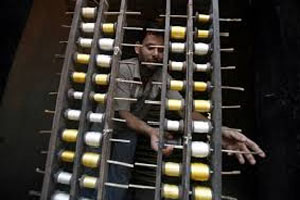
China to tap potential of indigenous silk portfolios in NE
YarnsandFibers News Bureau 2017-11-04 15:30:00 – New DelhiChina alarmed at rapid expansion of silk industry, the government is now making an effort to tap the potential of indigenous silk portfolios in the North East of India. As China produces close to 1 lakh tonne of mulberry silk every year.
India is the second largest silk producer in the world after China but the difference is just huge. But with an investment close to Rs 700 crore, 24 projects in the North East, including two in Meghalaya, would help the government meet the national raw silk production target.
The new project aims at using the skills available in the North East and increasing its contribution of 21 per cent to the total silk produced in the country to 24 per cent by the end of this fiscal year.
The broad objective of the scheme is to develop and modernise the textile sector in the North East Region by providing the required government support in terms of raw materials, seed banks, machinery, common facility centres, skill development, design and marketing support, among other things.
The specific objectives of the scheme include an increase in the value of textile production, technology upgradation, improving design capability, diversification of product lines and value addition, better access to domestic and export markets, clusterisation and improvement in labour productivity, market access and promotion.
The national raw silk production target for the year is 33,840 tonnes and their modest target is to contribute 7000 tonnes to it from the North East only, according to official sources.
In 2016-17, the total silk production was 30,348 tonne with 21,273 tonne of mulberry, 5,637 tonne of eri, 3,268 tonne of tussar and 170 tonnes of muga.
Silk produced in the North East are a mixed bag of varieties like eri, muga, mulberry and tussar. With these new projects, the primary target is not just to increase the production bulk but also work on the quality and make the best use of the skill in the region.
The scheme is being implemented under two broad categories: the Integrated Sericulture Development Project (ISDP) and the Intensive Bivoltine Sericulture Development Project [IBSDP] covering mulberry, eri and muga.
Market Intelligence
Ask for free sample Report

experience
Customer Base
dedicated team
Countries Served Worldwide









